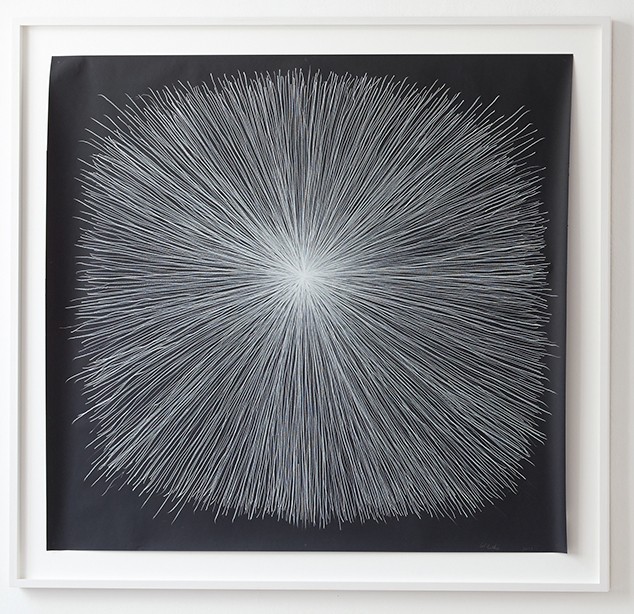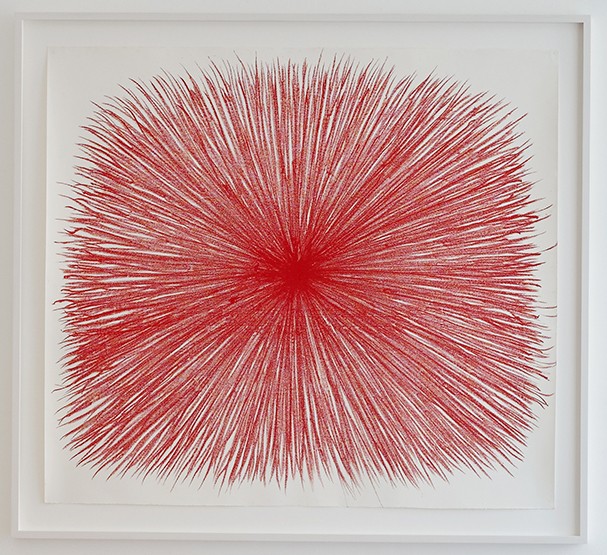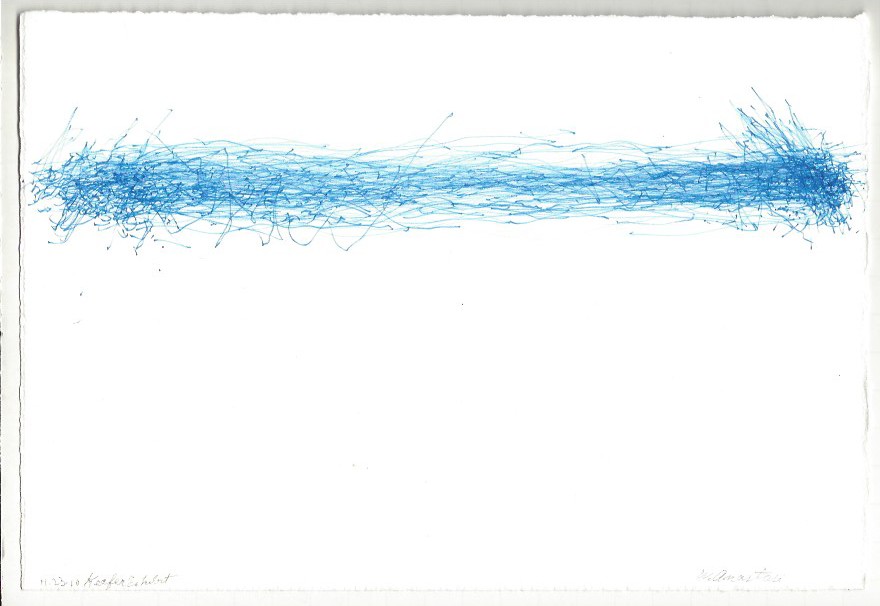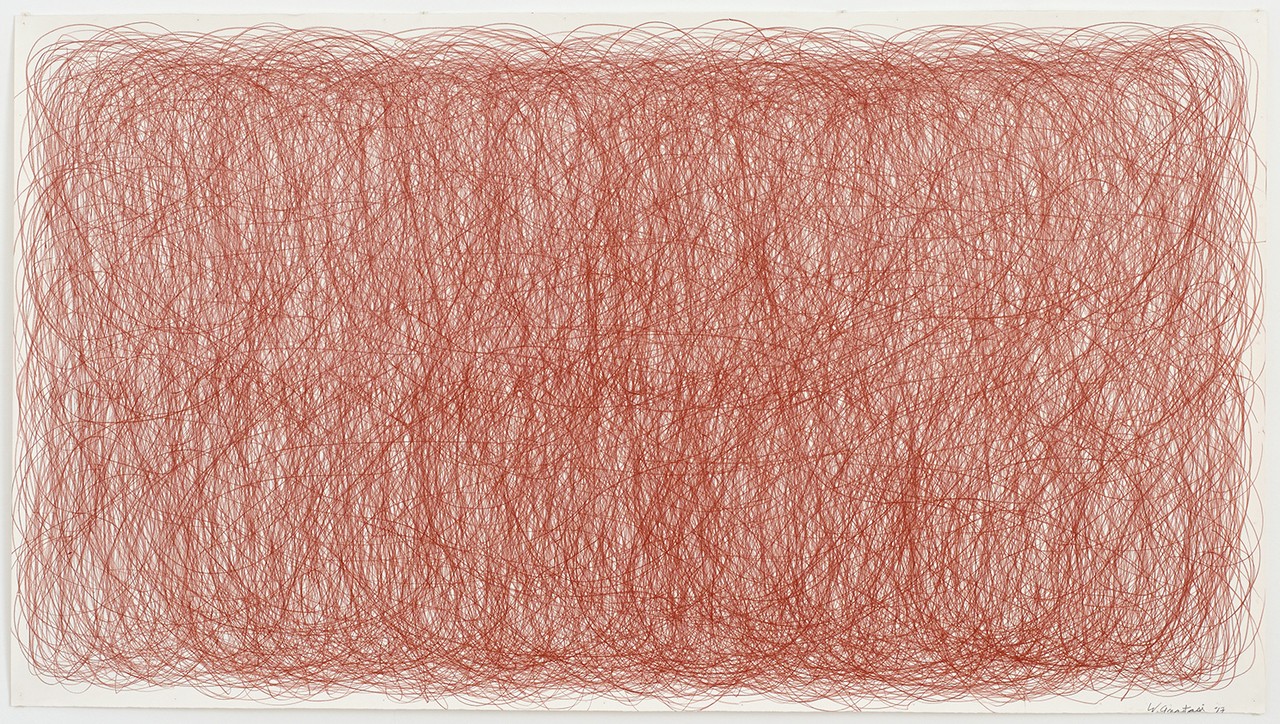William Anastasi
-
08 Sep - 14 Oct 2017
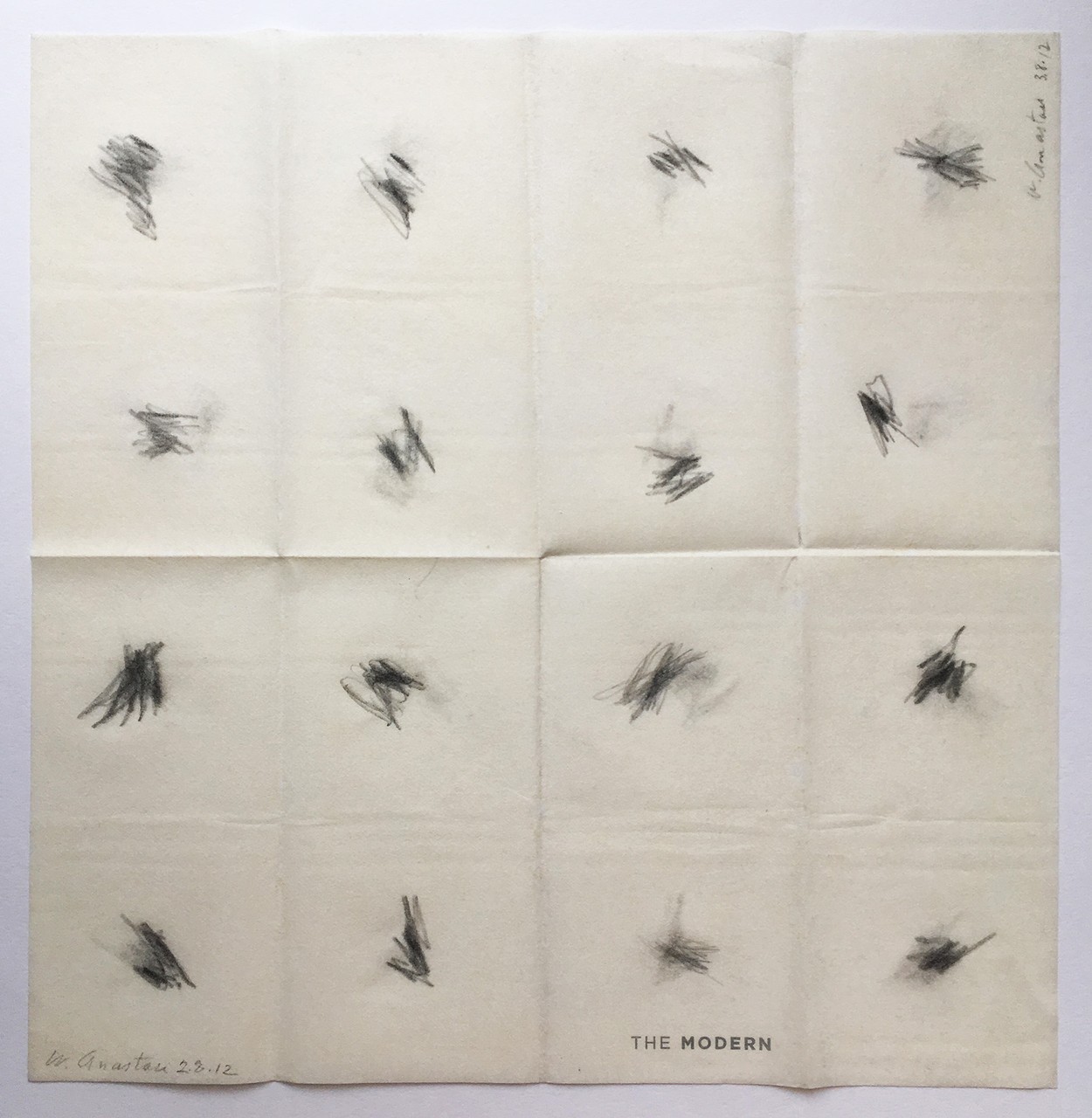
WILLIAM ANASTASI
Pocket Drawing 2.8.2012 3.8.2012, 2012
Pencil on napkin of the restaurant The
Modern, MOMA
42,8 x 4,5 cm
Pocket Drawing 2.8.2012 3.8.2012, 2012
Pencil on napkin of the restaurant The
Modern, MOMA
42,8 x 4,5 cm
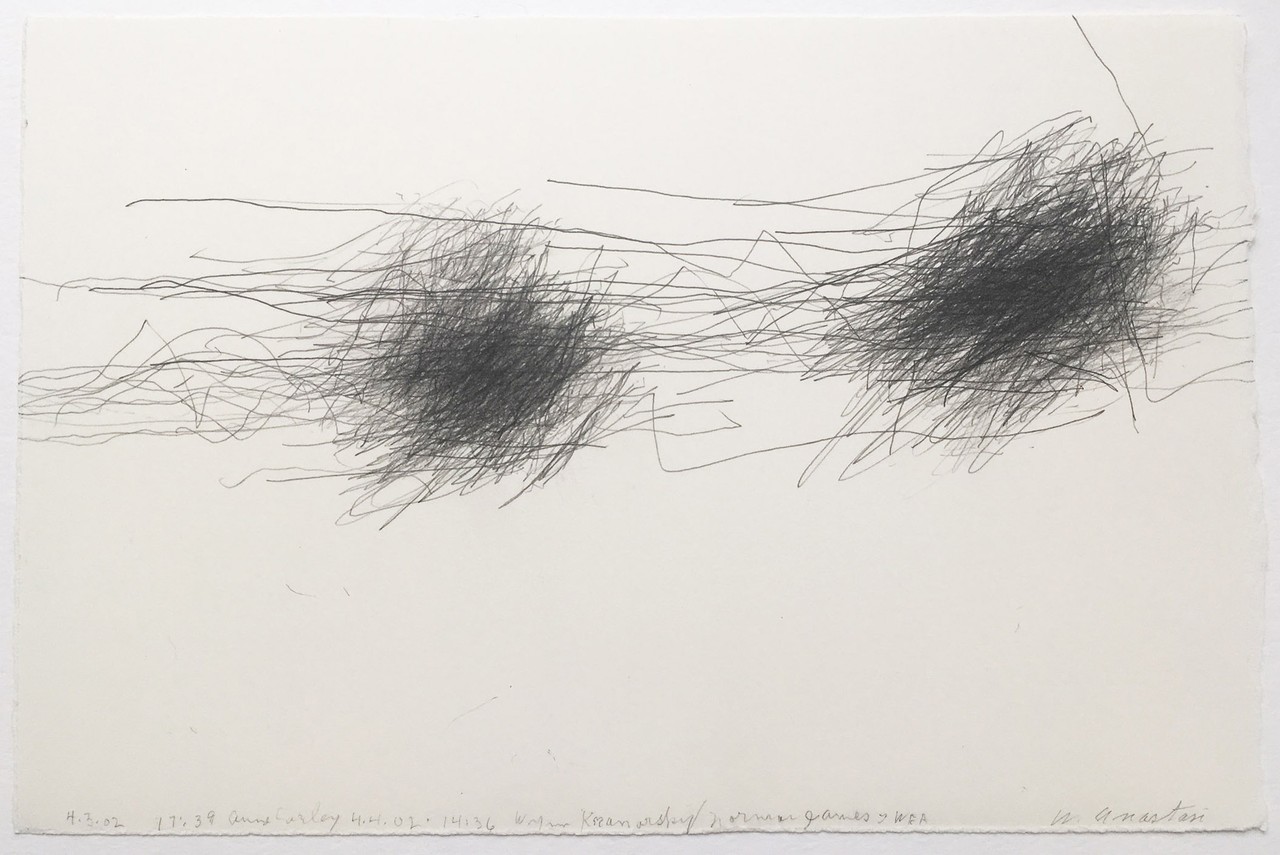
WILLIAM ANASTASI
Subway Drawing 4.3.02 17:39.....Wynn
Kramarsky....,2002
Pencil on handmade paper
19,4 x 29,3 cm
Subway Drawing 4.3.02 17:39.....Wynn
Kramarsky....,2002
Pencil on handmade paper
19,4 x 29,3 cm
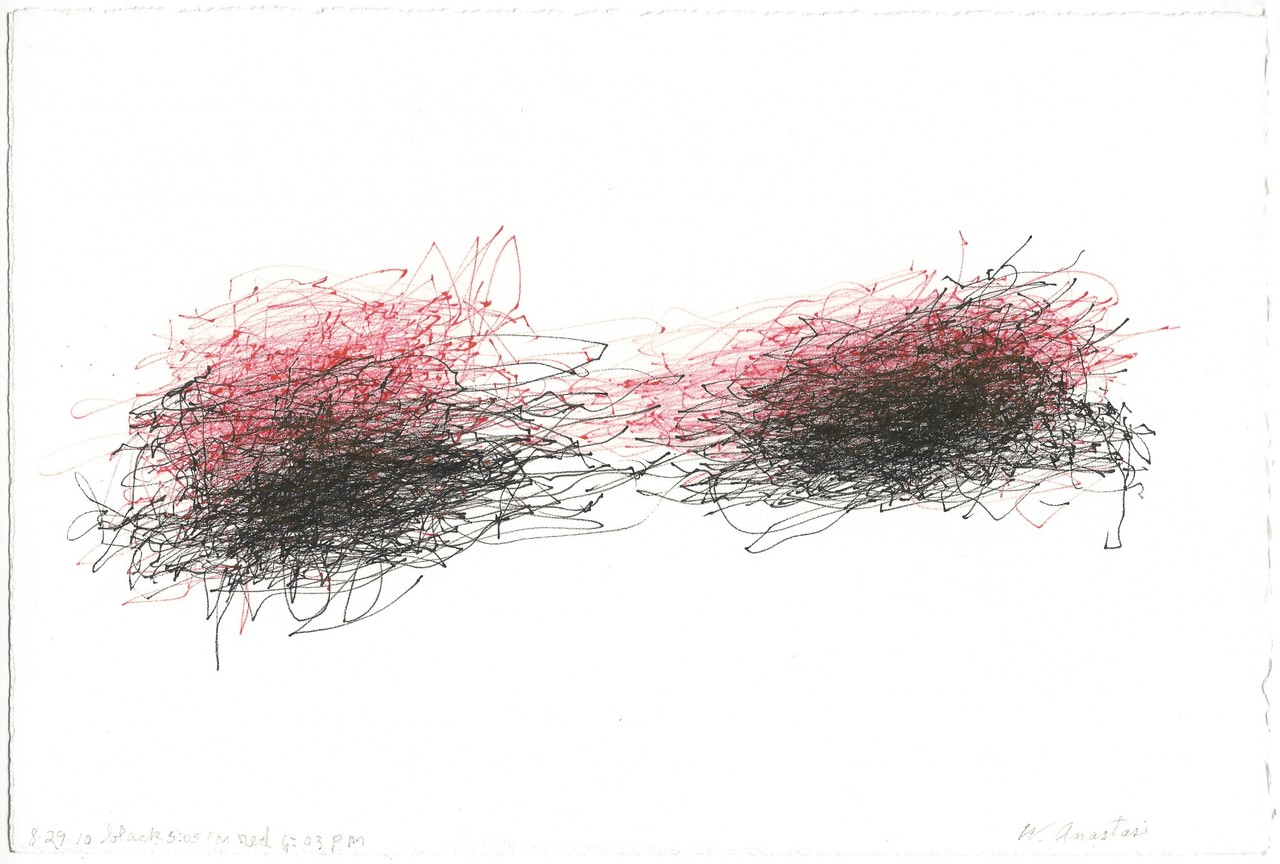
WILLIAM ANASTASI
Walking Drawing 8.29.10 black 5:05pm red
6:03pm, 2010
Black and red ink pen on paper
19,3 x 28,7 cm
Walking Drawing 8.29.10 black 5:05pm red
6:03pm, 2010
Black and red ink pen on paper
19,3 x 28,7 cm
On occasion of DC Open Thomas Rehbein Galerie is proud to announce a comprehensive exhibition dedicated to seminal works on paper from US-conceptual artist William Anastasi (*1933).
Anastasi’s works are firmly anchored in a conceptual art practice whose origins can be traced back to the 1960s. Influenced by such forerunners like Marchel Duchamp, the conceptual artists sought to overcome the superficiality of sensually perceived “retinal art” (Marcel Duchamp) and its eye-catching effects, proclaiming instead a conceptual approach, which considered idea and meaning to be essential aspects of art. In consequence, the material execution, as well as the concomitant technical problems, becomes of lesser concern, even culminating in a “dematerialization of art”.
Along with the exponents of the Conceptual Art movement, William Anastasi refuted the understanding of art as a transcendental vehicle. Abolishing all illusory elements and rejecting the ideals of classical, artist-centered crafts- and draftsmanship, along with a notion of uniqueness adhering to the conventional art object, conceptual artists propagated art ́s theoretical existence and claimed thoughts or concepts to be the essential components of art. This focus gave rise to art forms that at times consisted only of a few instructions to be executed by anyone, which reflected the conditions of their making by means of language and the use of tautology and self-reference or “self-sameness”.
Anastasi ́s works on paper on display vividly resonate with the described notions, making visible the “dumb” (Anastasi) circumstances out of which art emerges. The selection of Blind Drawings, Walking Drawings, Subway Drawings, Burst Drawings, Drip Drawings and Pocket Drawings reflect the casual, or even coincidental movements in which the artist is physically engaged and out of which the drawings emerge.
In his Burst Drawings, Anastasi draws lines starting at the center of a large sheet of paper mounted on the wall. Standing in front of it blindfolded, Anastasi hold a piece of oil chalk in his outstretched arm, moving away from the center. The stretch of the line is limited to the reach of his arm, extending its range in all directions. The resulting compression of lines resembles an explosive outburst. The Walking Drawings bear marks of a pencil or pen on a piece of paper that appear while the artist walks to a given destination and back again. The marks trace the natural movements of the body while walking. In a similar way, Anastasi sits in a subway train, holding two pens or pencils in his hands, their movement determined solely by the jolts of the swaying subway car. The resulting shaky lines of the Subway Drawings are mere registrations of an external influence, automatic drawings attesting to the artist ́s
lack of control. Following a similar approach in his Pocket Drawings, Anastasi leaves strokes of pencil on a small slip of paper in his trouser pocket, removed from sight. Being engaged in another activity, e.g. meditation or film watching, the artist ́s attention is diverted from the art-making process. The resulting pencil marks are manifestations of mere physical movement. For the Drip Paintings, the artist stands on a ladder, holding a piece of string, to which a pen is attached. He lowers the pen onto a sheet of paper lying on the ground, aiming to leave the mark within the outline of a circle.
Detaching himself from imagination, Anastasi always tries to prevent his aesthetic prejudice from getting involved. The creative process is thus removed from the artist ́s influence, chance and coincidence have come to take over the drawing tool, obliterating the unique signature of the traditionally celebrated artist-as-genius. Here, the artist ́s “blindness” is being exposed as a state of powerlessness, delivering art to unprecedented, random circumstances. By way of introducing distraction, disturbance and blindness as “productive” factors, Anastasi ́s approach bypasses the artistic ideals of inventiveness and originality, consciously seeking to evade aesthetic considerations and decisions.
This exhibition is conceived to promote William Anastasi ́s work on paper, to which a comprehensive publication will soon be dedicated. The show in Cologne, concentrating on important groups of drawings such as those previously described, serves as a starting point to be followed by a series of museum exhibitions to further establish the significance of Anastasi ́s works within the historical context of their origin as well as with regard to their impact on a younger generation of artists.
Anastasi’s works are firmly anchored in a conceptual art practice whose origins can be traced back to the 1960s. Influenced by such forerunners like Marchel Duchamp, the conceptual artists sought to overcome the superficiality of sensually perceived “retinal art” (Marcel Duchamp) and its eye-catching effects, proclaiming instead a conceptual approach, which considered idea and meaning to be essential aspects of art. In consequence, the material execution, as well as the concomitant technical problems, becomes of lesser concern, even culminating in a “dematerialization of art”.
Along with the exponents of the Conceptual Art movement, William Anastasi refuted the understanding of art as a transcendental vehicle. Abolishing all illusory elements and rejecting the ideals of classical, artist-centered crafts- and draftsmanship, along with a notion of uniqueness adhering to the conventional art object, conceptual artists propagated art ́s theoretical existence and claimed thoughts or concepts to be the essential components of art. This focus gave rise to art forms that at times consisted only of a few instructions to be executed by anyone, which reflected the conditions of their making by means of language and the use of tautology and self-reference or “self-sameness”.
Anastasi ́s works on paper on display vividly resonate with the described notions, making visible the “dumb” (Anastasi) circumstances out of which art emerges. The selection of Blind Drawings, Walking Drawings, Subway Drawings, Burst Drawings, Drip Drawings and Pocket Drawings reflect the casual, or even coincidental movements in which the artist is physically engaged and out of which the drawings emerge.
In his Burst Drawings, Anastasi draws lines starting at the center of a large sheet of paper mounted on the wall. Standing in front of it blindfolded, Anastasi hold a piece of oil chalk in his outstretched arm, moving away from the center. The stretch of the line is limited to the reach of his arm, extending its range in all directions. The resulting compression of lines resembles an explosive outburst. The Walking Drawings bear marks of a pencil or pen on a piece of paper that appear while the artist walks to a given destination and back again. The marks trace the natural movements of the body while walking. In a similar way, Anastasi sits in a subway train, holding two pens or pencils in his hands, their movement determined solely by the jolts of the swaying subway car. The resulting shaky lines of the Subway Drawings are mere registrations of an external influence, automatic drawings attesting to the artist ́s
lack of control. Following a similar approach in his Pocket Drawings, Anastasi leaves strokes of pencil on a small slip of paper in his trouser pocket, removed from sight. Being engaged in another activity, e.g. meditation or film watching, the artist ́s attention is diverted from the art-making process. The resulting pencil marks are manifestations of mere physical movement. For the Drip Paintings, the artist stands on a ladder, holding a piece of string, to which a pen is attached. He lowers the pen onto a sheet of paper lying on the ground, aiming to leave the mark within the outline of a circle.
Detaching himself from imagination, Anastasi always tries to prevent his aesthetic prejudice from getting involved. The creative process is thus removed from the artist ́s influence, chance and coincidence have come to take over the drawing tool, obliterating the unique signature of the traditionally celebrated artist-as-genius. Here, the artist ́s “blindness” is being exposed as a state of powerlessness, delivering art to unprecedented, random circumstances. By way of introducing distraction, disturbance and blindness as “productive” factors, Anastasi ́s approach bypasses the artistic ideals of inventiveness and originality, consciously seeking to evade aesthetic considerations and decisions.
This exhibition is conceived to promote William Anastasi ́s work on paper, to which a comprehensive publication will soon be dedicated. The show in Cologne, concentrating on important groups of drawings such as those previously described, serves as a starting point to be followed by a series of museum exhibitions to further establish the significance of Anastasi ́s works within the historical context of their origin as well as with regard to their impact on a younger generation of artists.

